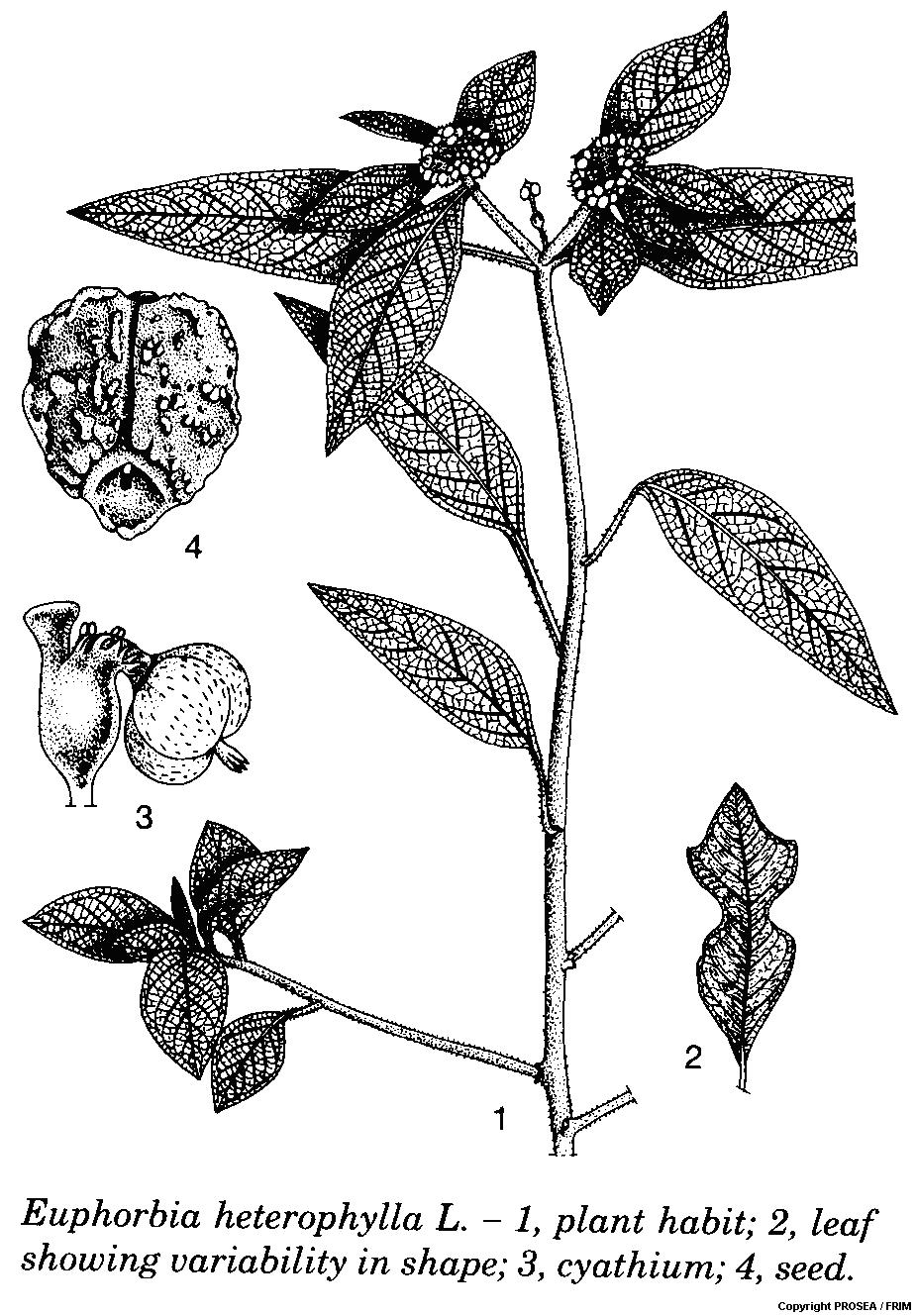Euphorbia heterophylla L.
Family
Euphorbiaceae
Synonyms
Euphorbia prunifolia Jacq., Poinsettia geniculata (Ort.) Klotzsch & Garcke ex Klotzsch, Poinsettia heterophylla (L.) Klotzsch & Garcke ex Klotzsch, Euphorbia taiwaniana Ying.
Vernacular Names
| Malaysia | Pekapar (Peninsular). |
| English | Japanese poinsettia, Mexican fireweed, mole plant. |
| Thailand |
Yaa yaang (General), bai taang dok, luuk khoei taai mae yai tham sop (Bangkok). |
| Vietnam | C[or] m[ur]. |
Geographical Distributions
Euphorbia heterophylla is found in native to Central and South America, but nowadays naturalised throughout the tropics. Within Malesia, it is not yet reported from the Philippines.
Description
Euphorbia heterophylla is an annual or facultative perennial and unarmed herb up to 110(-200) cm tall.
The leaves are arranged alternately, lance-shaped or ovate to distinctly fiddle-shaped, measuring 3-14 cm x 0.5-7 cm, with wedge-shaped to rounded base, obtuse to slightly acuminate at apex, with entire to serrulate margin, dull green, hairless to sparsely hairy above and below. The petiole is up to 3(-6) cm long and hairy.
The inflorescence is composed of densely-clustered cyathia in axillary or terminal cymes. The bracts are similar to the leaves but progressively smaller and paler green but sometimes purple-spotted. The cyathia is 1(-2) peltate, spotted with funnel-shaped glands with a circular, opening and yellow anthers measuring 0.5-1.2 mm wide.
The capsule is deeply 3-lobed, measuring 4-5.5 mm x 3.5-4.5 mm, smooth and with fine hairs. The seeds are truncate-ovoid and bluntly covered with warty protuberances.
Ecology / Cultivation
Euphorbia heterophylla is a noxious weed of cocoa, tea, rice and sugar cane, also found in gardens and waste places, and in alluvial soils and sandy beaches, up to 3000 m altitude.
Line Drawing / Photograph
References
- Plant Resources of South-East Asia No.12(1): Medicinal and poisonous plants 1.



